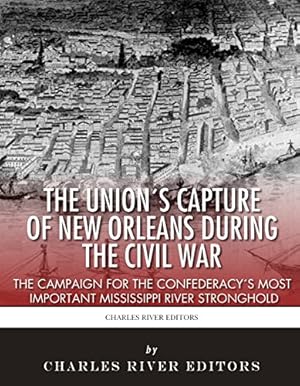Description
*Includes pictures
*Includes accounts of the campaign and occupation written by Benjamin Butler and others
*Includes online resources and a bibliography for further reading
*Includes a table of contents
"As the officers and soldiers of the United States have been subject to repeated insults from the women (calling themselves ladies) of New Orleans in return for the most scrupulous non-interference and courtesy on our part, it is ordered that hereafter when any female shall by word, gesture, or movement insult or show contempt for any officer or soldier of the United States she shall be regarded and held liable to be treated as a woman of the town plying her avocation." - Benjamin Butler's General Order No. 28
In 1860, New Orleans was just as unique a city as it is today. It was racially and linguistically diverse, with many French, German, and Spanish speakers, and a population of white, black, and mixed-race inhabitants. Louisiana's population was 47% slave and also had one of the largest numbers of free blacks in the country. Situated near the mouth of the continent's largest river, the Mississippi, it was an international center for trade and industry. New Orleans was the sixth largest city in the country and the largest in any of the states that would end up joining the Confederacy. The volume of trade through its port was second only to New York, and the city's commercial ties with England and Spain and cultural ties with France meant that the European powers would be looking closely at how the city fared in the Civil War, especially after it was occupied by Union forces. The Lincoln administration, fearful of European meddling in the war effort, had to constantly keep European opinion in mind when dealing with the captured city, and the story of New Orleans in the Civil War is one of far-reaching political, racial, and social tensions.
Given its importance, it's somewhat surprising in retrospect that the Union managed to capture New Orleans in an easier manner than places like Vicksburg and Atlanta. Admiral David Farragut's naval forces battered their shaky Confederate counterparts and were able to get over a dozen ships upriver past a couple of crucial Confederate forts along the Mississippi. By May 1862, Union forces occupied the city and General Benjamin Butler became its military governor, leaving the last true bastion of Confederate defenses on the Mississippi at Vicksburg. When Grant captured that in July 1863, the Union controlled the entire river and essentially cut the Confederacy in two.
In many ways, the occupation of New Orleans for the rest of the war is as intriguing a story as the campaign to capture it. Butler was a political general, and while he would go on to be a politician in the North after the war, he became the most reviled man in the South as a result of his reign in New Orleans. During a governorship that helped earn him the moniker "Beast," Butler became notorious for several acts, including seizing a massive amount of money that had been deposited in the Dutch consul's office. But it was General Order No. 28, which said any woman in town who insulted a member of the Army would be treated like "a "woman of the town plying her avocation" (in other words, she'd be treated as a prostitute) that earned widespread condemnation across the nation, and even abroad in England. Butler was considered so brutal in the South that Confederate president Jefferson Davis personally ordered that he should be executed if he was captured. As it turned out, he never was, and when he was recalled east, he served in commands for the duration of the war before going on to a distinguished political career.
The Union's Capture of New Orleans during the Civil War: The Campaign for the Confederacy's Most Important Mississippi River Stronghold chronicles the history of the campaign and the occupation of New Orleans by the Union in 1862.
Tag This Book
This Book Has Been Tagged
Our Recommendation
Notify Me When The Price...
Log In to track this book on eReaderIQ.

